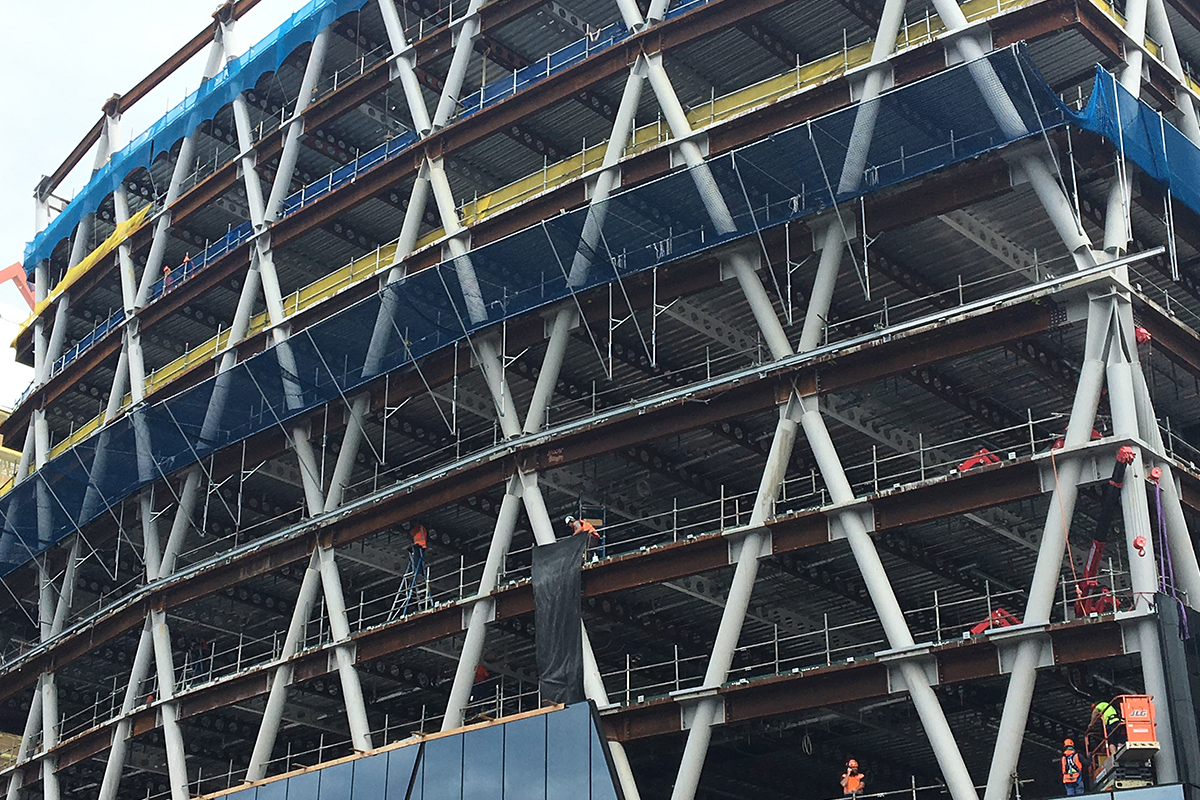After six years of hard work, we’re proud to announce that AS/NZS 2327 has been published in collaboration with our Australian colleagues.
Steel-concrete composite construction has proved popular over the last thirty years, and has largely accounted for the international dominance of steel frames in multi-storey buildings. Its success being the strength and stiffness that can be achieved with minimum use of materials.
Composite construction is often beneficial because concrete is good in compression and steel in tension – and together can be exploited to result in a highly efficient and lightweight design. Reduced self-weight of composite elements lessens forces applied to the elements supporting them, including the foundations. Which is also why composite systems offer benefits in construction speed, costs of services and the building envelope.
A need to revise, update and improve
The NZ standard NZS 3404 formed the basis for designing steel structures since 1977, and differed from the equivalent Australian design standard AS 4100 by including rules for composite and earthquake design.
Although the composite design provisions in NZS 3404 have fared well over the years, the following issues existed:
- the rules were sometimes incomplete and/or their limitations unclear;
- reliance was placed on other international standards to design some elements which were difficult to apply (as they weren’t written in the Australasian capacity reduction factor format), or at worst the international standard had been withdrawn/superseded (e.g. BS 5950);
- there were no rules to support recent structural innovations like long-span cellular beams;
- the existing Australian composite standard AS 2327.1 was limited to composite beam design and didn’t support the use of trapezoidal decking – effectively placing a technical barrier on trade for NZ deck manufacturers; and
- due to the size of the NZ market, international software developers were reluctant to develop design software that could increase NZ design productivity.
By leveraging close relationships built with the Committee responsible for the bridge standard AS/NZS 5100.6 our General Manager Dr Stephen Hicks worked closely with its Chair, Professor Brian Uy to ensure these issues were addressed.
Initially participating in the preparation of the project proposal to Standards Australia in 2011, and continually driving the development until today’s successful publication of what is the first NZ and Australian composite design standard for multi-storey buildings.
For HERA, the robust process of collaboratively developing AS/NZS 2327 will provide designers with greater confidence by exploiting the wealth of research undertaken on both sides of the Tasman.
Stephen went on to say “It’s expected that AS/NZS 2327 will lead to more structurally efficient and cost-effective designs.”
“And while some may raise their eyebrows at it taking six years to develop – compared to international examples like the Eurocode that took 30 years, this is a remarkable achievement!”
As well as physically drafting the document, HERA carried out several collaborative research projects in parallel. Including the new design provisions on composite columns, which go beyond the limits permitted by other international standards.
Many of the innovations that weren’t currently contained within international standards have been incorporated within AS/NZS 2327 like the Slab Panel Method for fire design in HERA Report R4-131.
“It’s hoped this work will increase steel market share, give wider acceptance of innovative technologies by removing existing technical barriers for goods and services with Australia and, increase business opportunities for our members,” Stephen said.
“We also hope that the larger customer base of joint AS/NZS standards will entice international software providers to offer design programs that will increase productivity of NZ designers in the future.”
Want to know more about our activities in New Zealand and international standards?
We’re working hard to ensure that our New Zealand steel sector remains competitive in the global market, and we’d be happy to share our steps to achieve this. Contact our General Manager Structural Systems Dr Stephen Hicks for details.

